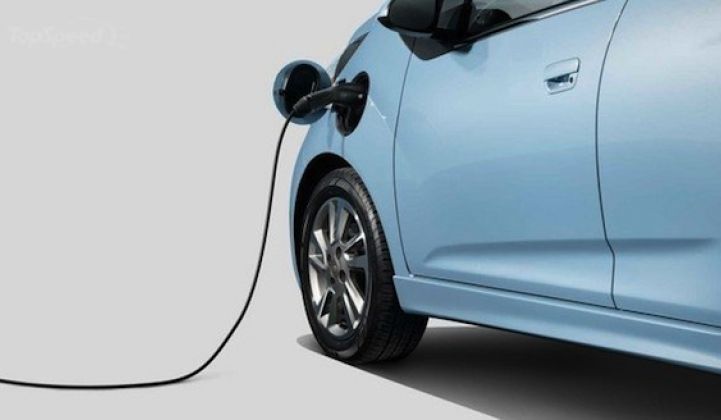Plug-in electric vehicles could be a real threat to future grid stability, overloading neighborhood circuits and causing major problems for utilities. Alternatively, they could be a “killer app” for the grid edge, able to delay charging to avoid local or systemwide peaks or absorbing excess solar and wind power to better integrate it into the grid.
But how are utilities supposed to harness thousands of customers’ EVs as grid assets, when each automaker and EV charging system has its own technology for connecting them to the utility? It would be much better if everyone could agree on a standard set of technologies that utilities could share and that plugged-in cars could receive no matter where they’re charging.
For more than a half-decade, the utility-funded Electric Power Research Institute has been working on this universal technology concept, via pilot projects with individual automakers and utilities. On Tuesday, EPRI announced it is taking this technology platform to the next level, working with eight automakers and fifteen U.S. utilities to connect EVs to a common tech platform.
EPRI’s cross-country demonstration will include Ford Motor Co., General Motors, Chrysler, BMW, Mercedes-Benz, Toyota, Honda and Mitsubishi as EV test partners. On the grid side, mid-Atlantic grid operator PJM will join utilities including Detroit’s DTE Energy, Texas’ CenterPoint Energy, CPS Energy and Austin Energy, California’s big three investor-owned utilities, Chicago’s Commonwealth Edison, federal power entity TVA, Canadian utility Manitoba Hydro, and multi-state utilities Duke Energy, Southern Company and Northeast Utilities.
The broader goal is to show that lots of different vehicles, plugged in anywhere that lacks a networked EV charging system, can be utilized as grid assets, Dave McCreadie, manager of electric vehicle infrastructure and smart grid for Ford Motor Co., said in a recent interview. Today, many of these EVs may not only be inaccessible to grid commands -- the utility may not know that they’re plugged in at all.
Using what’s being called an “OEM central server” platform, EPRI and its partners will be using multiple communications pathways to send signals to plugged-in EVs based on a common set of protocols, he said. Some utilities may use smart meters to communicate to cars via wireless protocols like Wi-Fi or ZigBee, or the HomePlug Green PHY powerline carrier standard, he said. Others may use cellular-network-linked, proprietary on-board systems like GM’s OnStar or Ford’s MyFord Mobile, he said.
“That’s the beauty of this cloud-based platform,” he said. “Even though there’s going to be a wide diversity on the OEM side as far as telematics, we will all end up communicating into this cloud that has a common interface and common APIs. […] This cloud-based solution will be able to reach all these vehicles, so that when the electric grid sends out a message to manage load, a wide spectrum of cars would be able to participate.”
Right now, Japan’s Sumitomo is setting up the OEM central server as a demonstration project, using several commonly accepted technologies to get relatively simple demand response messages to participating vehicles, he said. Those technologies include OpenADR 2.0b, now being used to send demand response data between utilities and customers, and Smart Energy Profile 2.0, a still-developing standard for home energy device communications.
Right now, EPRI and its partners are focusing on sending simple on/off commands to charging EVs, McCreadie said. That’s a lot less problematic than pulling electricity from EV batteries, which could prematurely wear down the battery and imperil vehicle warranties.
While the upcoming pilot will focus on simple demand response messages, “besides demand response, we will also be able to do frequency regulation; we’ll be able to do dynamic pricing,” all using simple on/off charging commands aggregated across lots of vehicles.
“Part of the functionality the central server is designed for is to do this aggregation,” he said. “Any utility that sends out a message, the central server would know how many cars are plugged in for that region, and how to access them for the program.” While this year’s pilot won’t be testing this aggregation capability quite yet, it will be an important focus of the group’s work next year, he said.
About 225,000 plug-in vehicles are on U.S. roads today, representing a tiny fraction of the country's total transportation fleet. But their effects on local grid stability are already being anticipated by utilities in California, the epicenter of EV growth, and in grid-constrained places like Hawaii. Finding a common way to know where these vehicles are, what they're doing, and how they can alter their behavior to help the grid is an important first step to preparing the infrastructure for their broader adoption.



